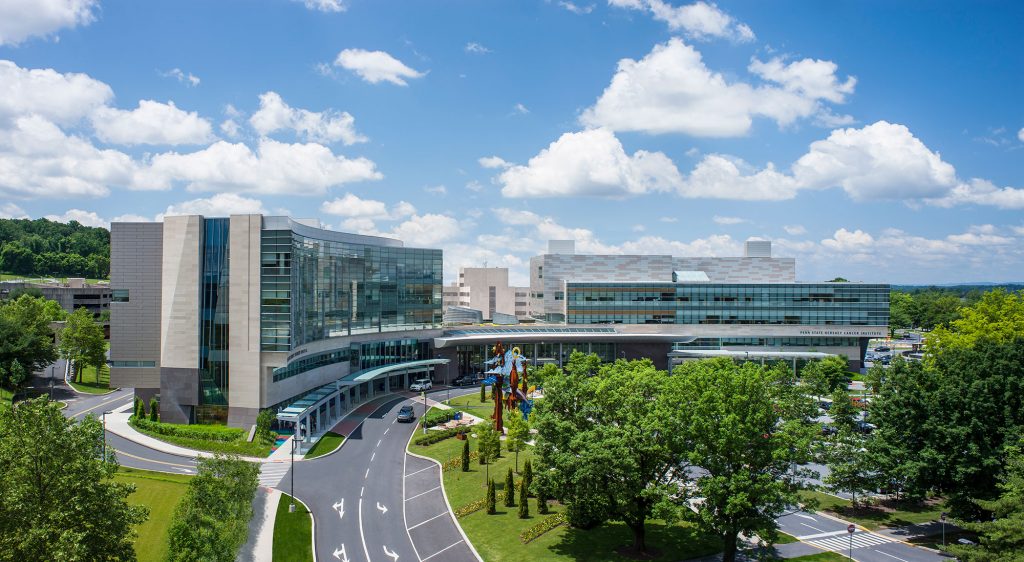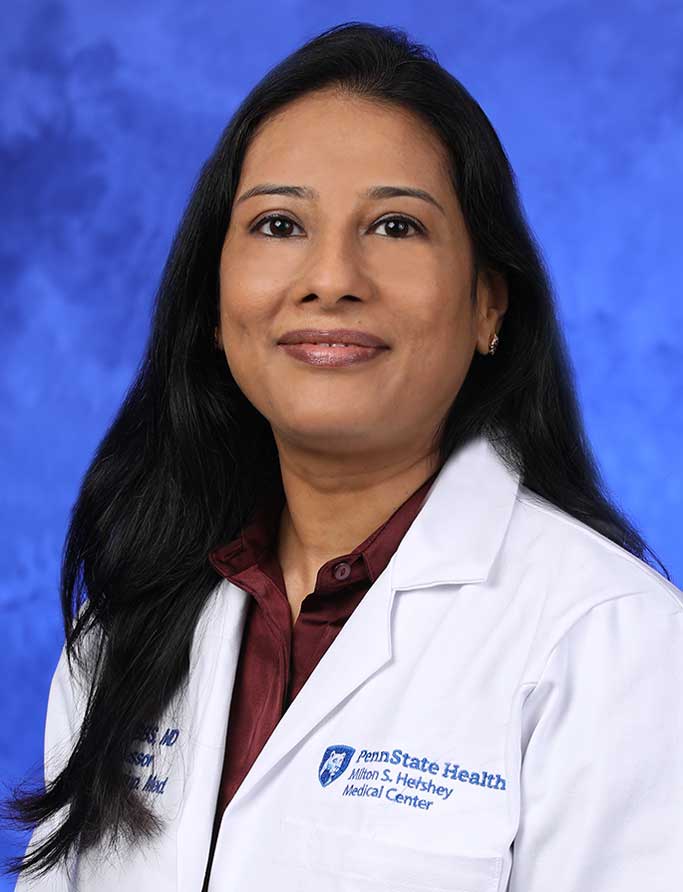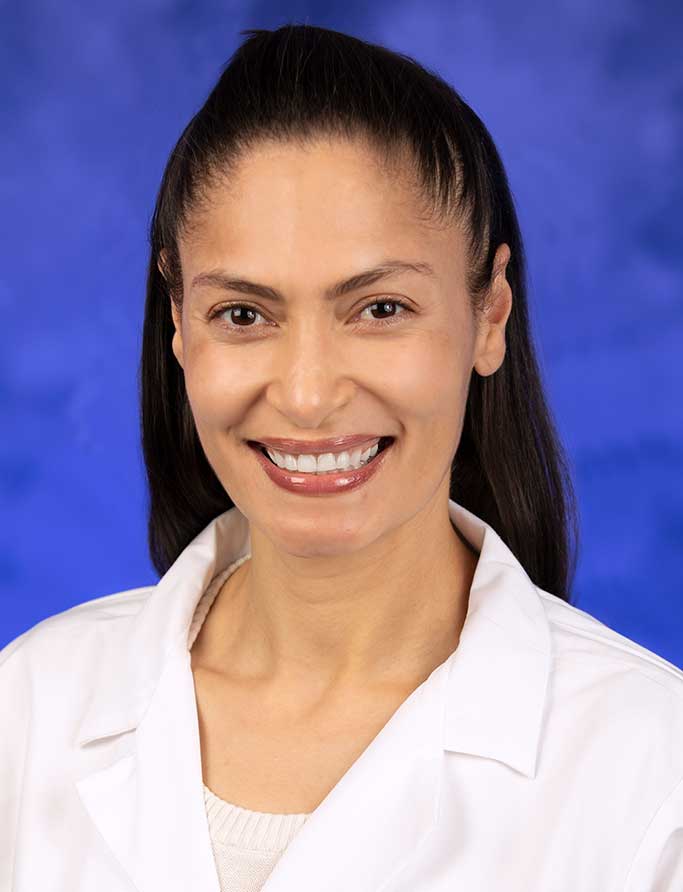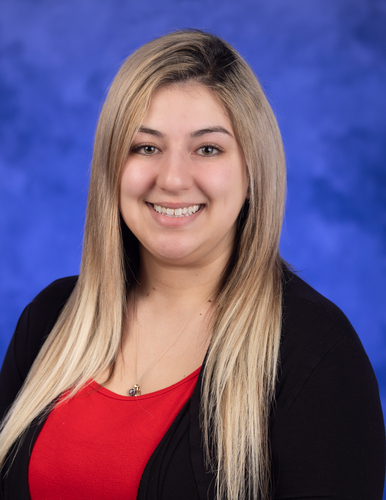The Neuroanesthesiology Fellowship at Penn State Health Milton S. Hershey Medical Center is a one-year (12-month), non-ACGME-accredited program that accepts one fellow per year.
Jump to topic
Search
Program Details
The Neuroanesthesiology Fellowship is accredited by the International Council on Perioperative Neuroscience Training (ICPNT). The Neurosurgical Anesthesiology Fellowship at Penn State Health Milton S. Hersey Medical Center is designed to provide advanced clinical training in the provision of anesthesia for the surgical and endovascular management of complex intracranial disease and the surgical treatment of complex acute and chronic spine disorders.
Fellows will have ample experience performing regional anesthesia and sedation for awake craniotomies and awake carotid endarterectomies. Furthermore, fellows will be provided an in-depth experience in intraoperative evoked potential and EEG monitoring.
In addition to a rotation in the neurosurgical intensive care unit, fellows will get experience in providing anesthesia for pediatric neurosurgical cases. The fellows will also participate in clinical or translational research in neuroanesthesia.
Learn More about the Fellowship
This fellowship will incorporate multiple didactic programs to help fellows gain proficiency in caring for patients who undergo neurosurgical procedures. Fellows will be expected to attend the following educational programs and conferences provided by the program:
- Weekly grand rounds
- Neuroanesthesiology, neurocritical care, neuroradiology educational conferences
- Monthly neuroanesthesiology journal club/case conference/problem-based learning discussion
- Quarterly research meeting
- Other educational activities
- Participation in developing clinical guidelines
- Teaching residents on neuroanesthesiology rotation
- Fellows will present a topic related to neuroanesthesia at grand rounds at the end of the year (45-minute presentation)
The fellowship is currently accepting applications for positions beginning in Summer 2024
Application documents to submit:
- Current curriculum vitae
- Application for faculty fellowship
- Letter of intent/personal statement
- Three current reference letters, including one from your residency program director or current director
- Copy of medical school diploma
- Copy of anesthesia degree
- Current medical license
- USMLE (all three steps-if applicable)
- ECFMG documentation (if applicable)
- Documentation supporting citizenship status (if applicable)
- H1B Visa holder or eligible (if applicable)
Please direct any inquiries related to the application process and supporting documents (or questions) to:
- Terria Hudock, Neuroanesthesiology Fellowship Coordinator: thudock@pennstatehealth.psu.edu
Interviews for the 2024-2025 Neuroanesthesiology fellowship positions will be conducted remotely through Microsoft Teams or another appropriate videoconferencing platform. Interview dates will be provided upon invitation.
Virtual Tour
Penn State Health
Penn State Health is a multi-hospital health system serving patients and communities across 29 counties of Pennsylvania. Its mission is to improve health through patient care, research, education and community outreach.
In December 2017, the system partnered with Highmark Health to facilitate creation of a value-based, community care network in the region. The shared goal of Highmark and Penn State Health is to ensure patients in the community are within:
- 10 minutes of a Penn State Health primary care provider
- 20 minutes of Penn State Health specialty care
- 30 minutes of a Penn State Health acute care facility
Learn more about Penn State Health

Penn State Health Children’s Hospital (left), Penn State Health Milton S. Hershey Medical Center (center) and Penn State Cancer Institute (right)
Penn State Health Milton S. Hershey Medical Center
500 University Dr., Hershey, Pa., 17033 (Derry Township, Dauphin County)
- The health system’s 647-bed flagship teaching and research hospital
- The only medical facility in Pennsylvania accredited as both an adult and a pediatric Level I (highest-level) trauma center
- Dedicated surgical, neuroscience, cardiovascular, trauma and medical intensive care units
- Accredited Life Lion critical-care transport providing more than 1,100 helicopter and approximately 750 ground ambulance transports per year
- More than 1,300 faculty members and more than 650 residents and fellows
- Approximately 29,000 admissions, 73,000 emergency department visits, 1.1 million outpatient visits and 33,000 surgical procedures annually
- Designated as a Magnet hospital since 2007
Learn more about Milton S. Hershey Medical Center
Penn State Health Children’s Hospital
600 University Dr., Hershey, Pa. 17033 (Derry Township, Dauphin County)
- An eight-story, 263,000-square-foot-facility built in 2013 and expanded in 2020
- 146 licensed pediatric beds, 18 acute care beds and a 56-bed neonatal intensive care unit
- Level IV (highest-level) neonatal intensive care unit
- Level I quaternary (highest-level) pediatric intensive care unit
- Level I (highest-level) pediatric trauma center designation
- Intermediate care unit
- Dedicated pediatric operating rooms
- More than 150,000 pediatric outpatient visits and approximately 5,000 pediatric patient discharges annually
Welcome to Hershey
More About Hershey
Interested in learning more about living and working in Hershey, Pa.? See details here:
Fellow wellness, including emotional, spiritual, social and physical health, is a crucial component to training and to becoming a professional, compassionate and resilient physician. Self-care is a skill which must be continually practiced and reinforced. Penn State College of Medicine and Penn State Health are committed to addressing wellness, with multiple resources readily available.
Institutional resources
Institutional Resources
Penn State Health and Penn State College of Medicine celebrate, embrace and support the diversity of all patients, faculty, staff, students and trainees.
Office for Diversity, Equity and Inclusion
In keeping with this, Penn State Health has an active Office for Diversity, Equity and Inclusion with various programs, networks and resource groups, including:
- Talks and lectures on diversity, equity and inclusion through the Inclusion Academy
- Regular events on topics such as eradicating racism and creating a culture of inclusiveness
- Many Business Employee Resource Groups (BERGs), including:
- Disability Business Employee Resource Group
- Interfaith Business Employee Resource Group
- LGBTQ+ Business Employee Resource Group
- Military and Veterans Business Employee Resource Group
- Multicultural Business Employee Resource Group
- NextGen Business Employee Resource Group
Learn more about the Penn State Health Office for Diversity, Equity and Inclusion
Learn more about the College of Medicine’s Office for Diversity, Equity and Belonging
Office for Culturally Responsive Health Care Education
The vision at Penn State College of Medicine and Penn State Health is to equip learners with the knowledge, skills and attitudes they will need to provide culturally excellent health care and research for an increasingly diverse U.S. population. The Office for Culturally Responsive Health Care Education was formed to help meet that goal.
Learn more about the Office for Culturally Responsive Health Care Education
Office for a Respectful Learning Environment
In addition, the institution does not tolerate discrimination, biases, microaggression, harassment or learner mistreatment of any kind, and any concerns are immediately addressed by the Office for a Respectful Learning Environment.
Learn more about the Office for a Respectful Learning Environment
Network of Under-represented Residents and Fellows
The Network of Under-represented Residents and Fellows (NURF) is a group of diverse residents and fellows representing all specialties. NURF’s goal is to promote cultural diversity in the residency programs through community involvement, mentorship with diverse faculty, professional networking and support for the recruitment of diverse medical students into the residency programs.
NURF is sponsored by the Penn State College of Medicine Graduate Medical Education Office and the Penn State Health Office for Diversity, Equity and Inclusion.
Latest News from Anesthesiology






